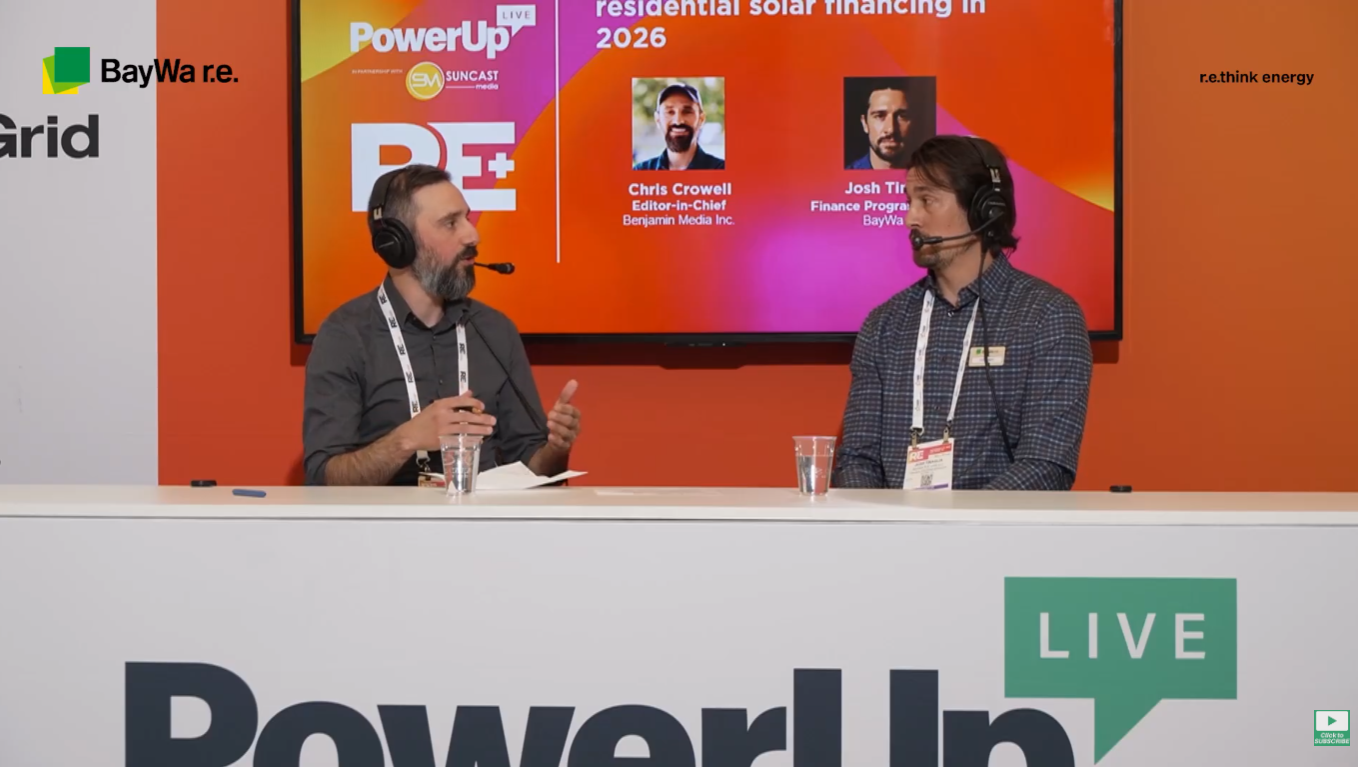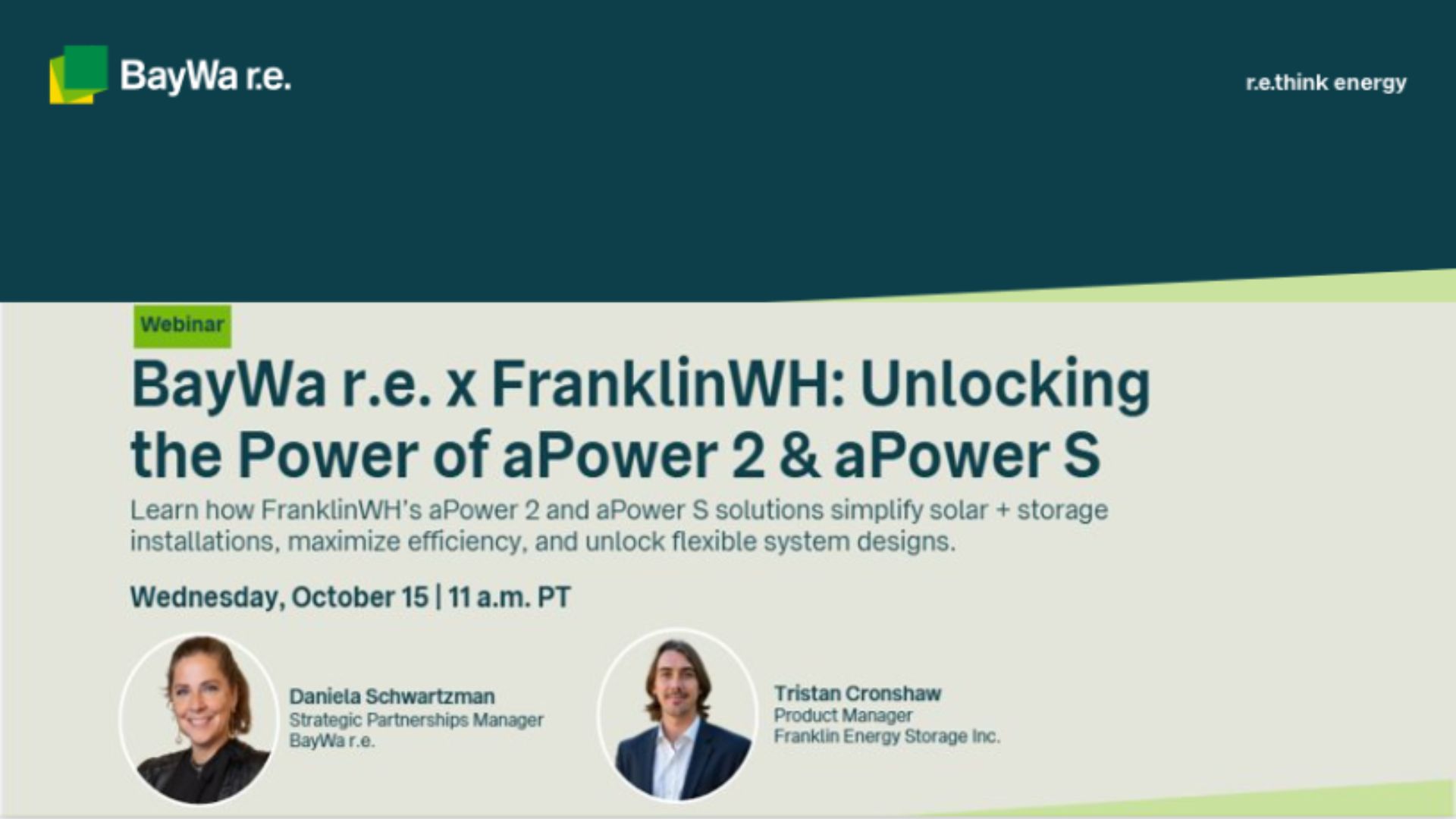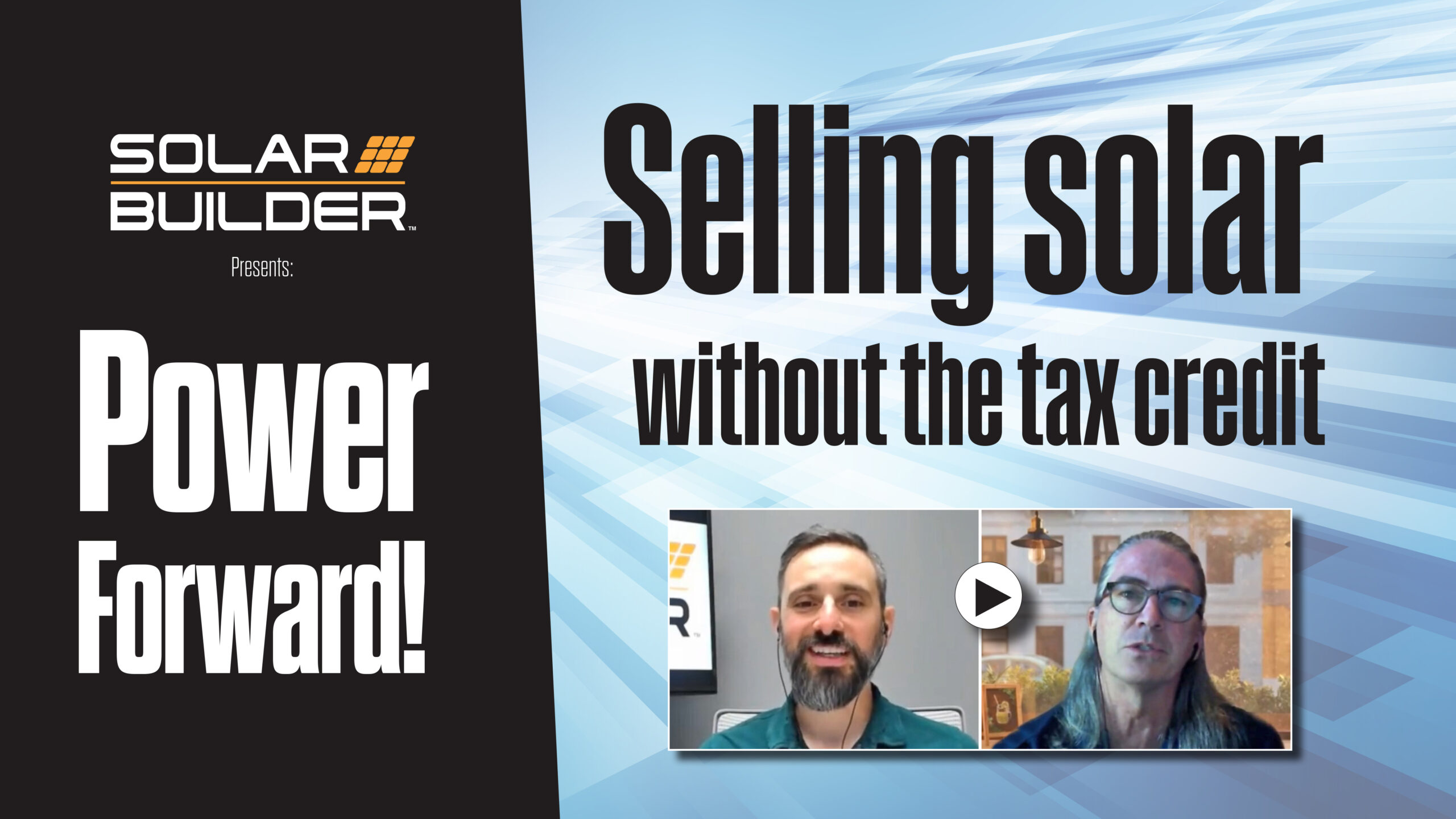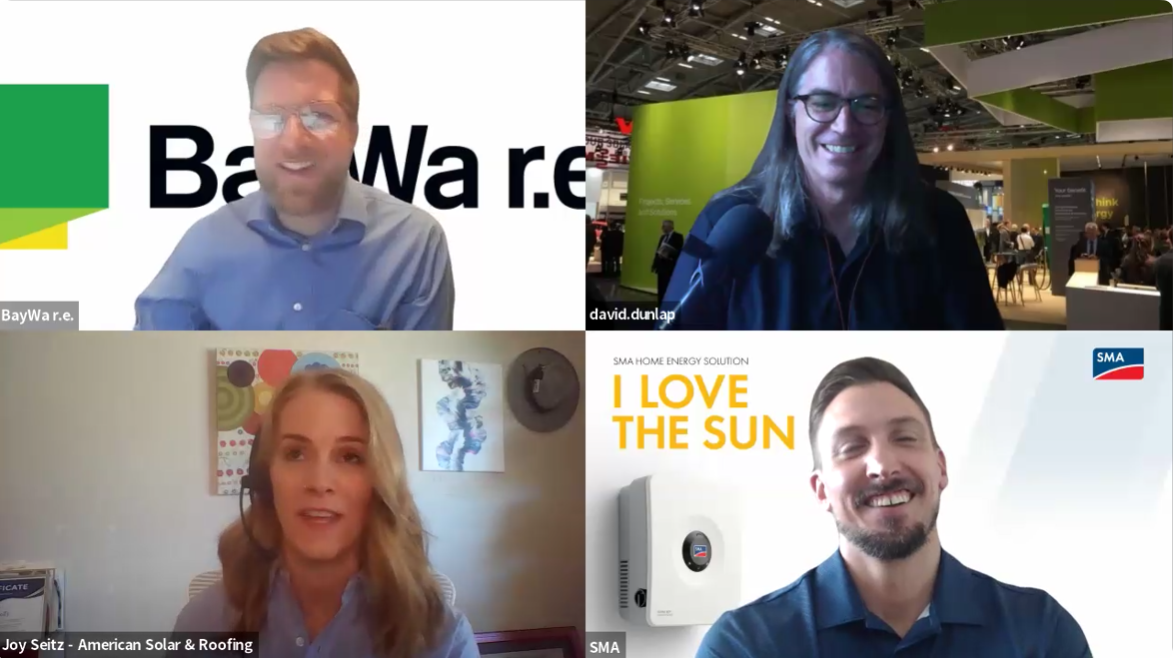Getting into commercial and industrial (C&I) solar projects isn’t just a matter of scaling up. It’s about understanding different equipment and installation considerations, different supply chain issues, and a different marketplace of customers. And the C&I business landscape is growing in the United States — bringing PV and storage installations to everywhere from hospitals and schools to warehouses and casinos resorts.
We, too, see the promise in this solar sector — and we want U.S. solar contractors to know that BayWa r.e. Solar Systems is your hub for commercial solar procurement needs, as well as your information resource for C&I industry insights and product advice.
Our commercial solar content is just as informative and timely as the residential solar knowledge you’ve come to know us for. And if you’re brand new to us — well this is a great time to follow BayWa r.e. Solar Systems.
Commercial Solar Knowledge Base
Bookmark our commercial and industrial (C&I) information page for solar contractors and stay updated on industry trends and product news.
Subscribe to The Current
Receive monthly email briefings on C&I solar segment updates, supply chain intelligence, and product tips in a short, digestible format.
So listen on to our first-ever commercial solar podcast with Guillaume — and stay in touch to tell us your requests for upcoming solar podcasts and blogposts!
— Tom Miller, Marketing Director
Podcast Summary
Key aspects that U.S. solar installers should understand when exploring commercial and industrial solar: “You want to streamline your supply chain and you want to think about how to best serve your customer… How do I make sure that six months down the road, the product that I’m ordering will arrive and I won’t have to have a change order with my customers? That’s been a little bit of a plague of this industry is that products evolve so fast: the modules move every six months and it increases by 5 to 10 Watts. It’s really hard for clients that the projects themselves that far out — and unfortunately six months is the sales cycle for a C&I project. Then, you really want to think about understanding more about the industry and who do you need to talk to. One example is commercial storage. You may have demand from your customers — especially if you’re in a market like California, New York, Massachusetts, or Arizona — but you might not know where to start as it’s a little bit more complex than a PV-and-inverter system. There’s a bit more financial involvement. There’s more modeling. It’s not necessarily rocket science, but it’s a little bit harder and it’s new. You need new education. So, find someone trustworthy… find long-term partnerships. You want to have someone that has your back.”
“You need new education. So, find someone trustworthy… find long-term partnerships. You want to have someone that has your back.”
— Guillaume Casanova, BayWa r.e. Solar Systems
The current market for C&I solar storage installs in the United States: “It’s the same market forces, except newer. You’re still very dependent on incentives that are driven by your state or by how the utility charges the building owners for the amount of energy they use, so the market opportunity is more limited. California, New York, New Jersey, Arizona, Massachusetts, and Hawaii are the big states right now, but the market expansion is growing extremely fast, and I think this year we’re set to double. And if you look far ahead in 2025, we’ll probably be six or seven times the size that we are today in terms of capacity installed. So there is a ton of momentum and growth out there, and if you’re a C&I entity that is looking to get into this, it really is the right time. Remember your MBA or marketing classes talking about first-mover advantage: you want to go your local community and be the one known for commercial storage, so as it becomes more popular, you are the solar installer people think about.”
How the U.S. stock market hints at the maturity of commercial solar market: “If you look at the best stocks of 2020, you’ll see that six out of the top 15 stocks somehow have their business related to renewable energy, including pure-play companies like Sunrun and Enphase. That gives you an idea of how far along solar has come, right? If you remember Enphase in 2017, I think their stock was worth $1 per share; now I think they’re trading around $200. But in those teen years, there were still business models to be proven, they were still incentive-dependent, and there were companies that were having the best product one year, and then the next year they had problems fulfilling or they’d go out of business… the potential was there, but the actual realization that it was taking off didn’t happen — until these past two years. Think of an ETF (exchange traded fund) which tracks and replicates the performance of vast pool of solar stocks. These days, that pool is going up, which means it’s not just superstar companies that are killing it — it’s all of them, driven by a few, but overall, it’s an industry that is doing really well.
Immediate shifts to understand about the C&I product supply chain: “For our C&I clients, we’re advising that there’s going to be PV module format changes in 2021. We’ve already seen it with products coming in that are bigger, have more power, and are more efficient; you’re going to get more power per module, but your module is bigger. The efficiency is roughly the same, so what installers want to look at is the LCOE (levelized cost of energy) and how that plays out. But anytime you have new products, that means supply chains are adapting upstream, and that means potentially, manufacturers can’t produce as much as they thought they could, because new production lines are facing some delays. I’s not going to threaten the industry at all, but you might see a product that you wanted in June in August. So that’s one of the things to look out for on the short term.”
On larger PV module price point implications: “So, the modules are bigger, but can you really compare the price point the same way? There is about a premium of two, three pennies for the bigger modules, but they produce the same efficiency. So how do you justify that? If you want an install with a thousand panels, it’s going to cost you the same labor force to do it, but you’re going to get more power out of them. So your labor cost divided by the amount of will be cheaper, right? Essentially, you see some savings in other areas in the BOS (balance of system) aspect of it in racking, labor force, amount of time you save… but it’s hard to know still because we were assuming the panels are coming in at the same price per Watt — which right now we know is not always the case.
But it’s about scale: “Overall, it’s good for the industry because you have more power, it’s the entry level of price, the next wave of innovation. Manufacturers are growing the cells and making them bigger, and they’re going to be able to ride a new wave of innovation. That’s going to increase efficiency, but we need to be mindful of price points, and how much savings you’re going to see on the other side. I think for utilities, it makes a lot of sense: you install so many products at scale and it means a lot. But if you do look at a 20- kilowatt project, you might not see substantial savings. So, you need to be mindful.”
“…the market expansion is growing extremely fast, and I think this year we’re set to double. And if you look far ahead, in 2025 we’ll probably be six or seven times the size that we are today in terms of capacity installed.”
— Guillaume Casanova, BayWa r.e. Solar Systems
What flavor of ice cream is best going forward? “Some manufacturers are making bigger wafers: bigger cells make bigger modules. Others are putting more cells into their modules — so you might start hearing about 78-cell modules, whereas the industry has been around 72 for the past 10, 15 years for commercial. Again, it’s like there’s going to be two or three flavors of ice cream around going forward. And so which one is the best for your customer? How do you sell it? How do you think about it? What is the incremental power that you’re going to get and how is that going to progress going forward? There’s a lot of different stuff you need to think about.”
Don’t forget storage: “On the storage side, you have a lot of interest from building owners or industry leaders that want to implement storage. For the buildings they’re leasing, they’re facing peak demand charges that are insane from their utilities, and storage makes a lot of sense. Though there’s a lot of interest, the price tag is still pretty steep, and it’s not a slam dunk to just go from interest to purchase. You need to be able to bring the customer along and tell them… what you’re really looking is your cashflow coming in from the savings you’re going to get from your storage system. And you need to be able to explain to them how tariffs will change on the utility side… so what people say is ‘You’re future-proofing your building against changes and tariffs from your utility.”

Guillaume Casanova is Director of Commercial Solutions at BayWa r.e. Solar Systems (USA). He brings more than 12 years of experience in wealth management, market analysis, and renewables industry partnerships to our team. Contact Guillaume at guillaume.casanova@baywa-re.com.
BayWa r.e. Solar Distribution supplies residential and commercial solar installers in the United States with quality solar + storage components, forecasting, business planning advice, and a community of experts. Visit www.solar-distribution.com to engage with our team, read our industry insights articles, and stream our Solar Tech Talk podcasts and recorded webinars on YouTube and Spotify. Follow us on LinkedIn and Facebook to stay connected. Ask us about our Financing Program and use our industry-leading Webstore to save time, get gear shipped, and get jobs done!
Part of the BayWa r.e. Global family of renewable energy companies.




